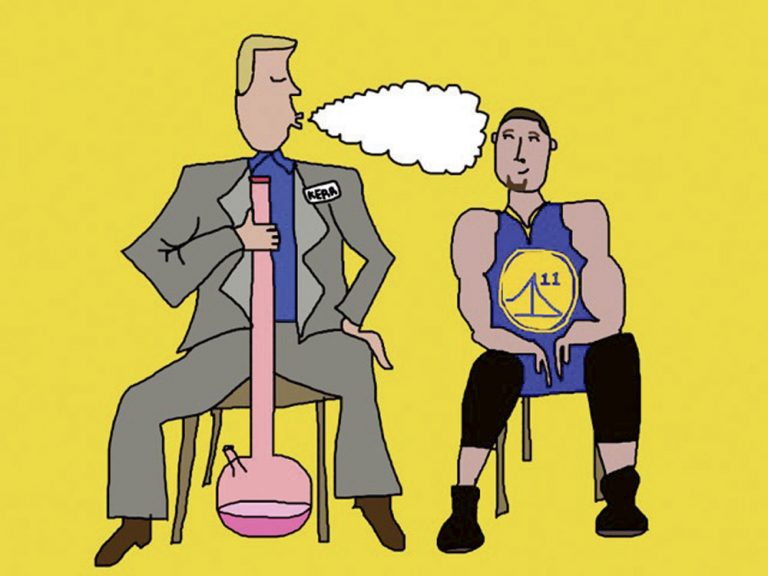
Spencer Wu
Staff Writer
When you pair the words “sports” and “scandal,” what usually comes to mind is baseball’s spotty track record of steroid and HGH use. Others might think of bouts of infidelity, Penn State’s child sex abuse fiasco, or even the existence of a fake girlfriend. But one will be hard-pressed to link the National Basketball Association with marijuana use, given the recent paradigm shift of the changing attitude toward the drug.
Recently, Golden State Warriors head coach Steve Kerr made headlines by detailing his use of marijuana. Despite the fact that usage is not allowed by the league’s official rules, Kerr said he used marijuana medicinally in order to treat his chronic back pain after his surgery, which sidelined him for almost half of the 2015-2016 regular season.
Kerr, seeming to understand the gravity of the situation, hedged his position by saying, “I guess maybe I could even get in some trouble for this, but I’ve actually tried [marijuana] twice during the last year and a half when I’ve been going through this chronic pain that I’ve been dealing with.” His hesitance also underscores the league’s limited experience with this issue.
Kerr is not the sole voice supporting marijuana in the NBA, as he is backed by fellow players and coaches alike. One of these players happens to be Golden State Warriors player Draymond Green. The all-star forward matter-of-factly addressed that it is “something that comes from the Earth [and] any vegetable that comes from the Earth, they encourage you to eat it. It does make a little sense as opposed to giving someone a manufactured pill. If something takes your pain away like some of these pills do, it can’t be all good for you.”
Other people on the team, like Klay Thompson, agree, supporting his coach by saying it seems more effective than painkillers, whereas Phoenix Suns head coach Earl Watson has reservations of the implications of such an incident.
Both Watson and Kerr are players turned coaches, but they have polarizing views on this divisive issue. The main problem that Watson has with Kerr’s comments is that it is a “slippery slope,” in that the youth might glamorize marijuana use. This “gateway drug” as he calls it definitely should be taken seriously and used responsibly, but shining a spotlight on its may unintentionally advocate irresponsible handling of marijuana.
Proponents, on the other hand, are recognizing that pot can help patients deal with the recovery process. Since it is in their job description to heal their bodies and be prepared for the battle, players see marijuana use as a part of the post-game, surgery, or injury healing routine, regardless of the implications surrounding the drug. In their eyes, it is a natural aid for the road to recovery, as opposed to artificial and often addictive manufactured pills and medication.
Probably the prevailing sentiment that makes people hesitant to side with these stories and first-person accounts is the social stigma behind recreational or medicinal use of marijuana. People associate pot smokers with the lazy, hippie “dude” that is often depicted on television or movie screens. This image is so ingrained in the fabric of our culture that people are still on the fence about the acceptance of this, even with the acknowledgement of the practical uses of the drug.
However, people are gradually warming up the idea that marijuana should be used for both medicinal and recreational purposes. Especially with the passing of Prop 64, which allows for recreational usage of marijuana for people over 21 years of age, marijuana use will definitely be more prevalent in everyday society.
Kerr noted a “change in these laws in different states, including California. But [he] would just hope that sports leagues are able to look past the perception.” But if one thing emerges from this tricky cloud of smoke, it is that the stigma behind the drug is slowly taking a backseat to newfound acceptance.










